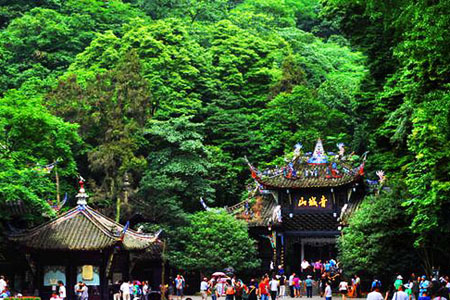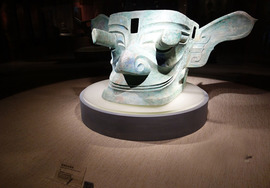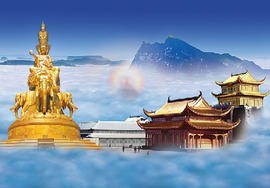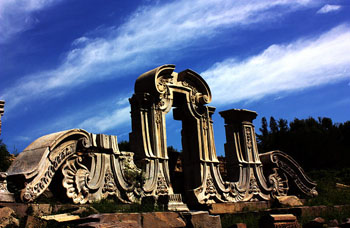 A. Brief Introduction
A. Brief Introduction
An outstanding expression of the creative art of Chinese landscape garden design, incorporating the works of man and nature in a harmonious manner.
The Summer Palace is located in the north-western part of Beijing. First built in 1750, largely destroyed in the war of 1860, and restored on its original foundation in 1886, it served four generations of the imperial family, and is now a popular resort of people from all walks of life.
The Chinese name for the Summer Palace is Yiheyuan, "The Garden of Harmonious Unity". The palace is an outstanding example of imperial parks and private gardens with features of both northern and southern China, and is the best preserved and largest of the Chinese imperial parks. As a masterpiece of Chinese landscape garden design, it integrates the natural landscape of hills and open water with man made features such as pavilions, halls, palaces, temples and bridges into a harmonious and aesthetically exceptional whole.
The Summer Palace covers an area of 290 ha, 3/4 of it being water. The present design gives prominence to Longevity Hill (Wanshoushan) and Kunming Lake. The garden is divided into three sectors: the official sector, the private sector and the landscape sector.
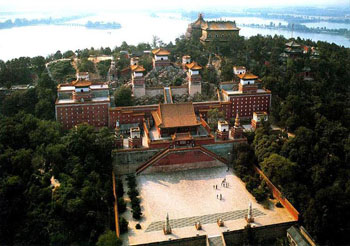 The official sector, or imperial palaces are in the eastern part of the Summer Palace. The main structures in this area include the Hall of Benevolence and Longevity (Renshoudian), also known as the Hall of Industrious Government (Qinzhengdian), its side halls and offices of ministers. The private sector is composed of three large courtyards, focusing respectively on the Hall of Jade Ripples (Yulantang), the Hall of Happiness and Longevity (Leshoutang) and the Yiba Hall. The landscape sector, the major part of the park, consists of Longevity Hill, Kunming Lake and a great variety of wooden, stone, glaze and brass structures.
The official sector, or imperial palaces are in the eastern part of the Summer Palace. The main structures in this area include the Hall of Benevolence and Longevity (Renshoudian), also known as the Hall of Industrious Government (Qinzhengdian), its side halls and offices of ministers. The private sector is composed of three large courtyards, focusing respectively on the Hall of Jade Ripples (Yulantang), the Hall of Happiness and Longevity (Leshoutang) and the Yiba Hall. The landscape sector, the major part of the park, consists of Longevity Hill, Kunming Lake and a great variety of wooden, stone, glaze and brass structures.
The Summer Palace is famous both for its general design and its individual structures. For instance, the Long Corridor (Changlang) is one of the longest of its kind in Chinese history; the Palace Theatre (Daxilou) is one of the three largest palace theaters in China (the other two are in the Forbidden City and Chengde Mountain Resort, respectively); the Marble Boat is often used as a poetic symbol of ancient China. There is also a large screen decorated with a nine-dragon design symbolizing imperial power and with the Chinese character for "longevity" in 226 types of calligraphy in the middle of the Hall of Benevolence and Longevity.
B. Cultural Heritage
China has long been known worldwide for its gardens, including private gardens and imperial parks, all characterized by the harmony of natural and man made beauty. The Summer Palace has natural beauty resembling that of the mountains and rivers of northern China and the lower reaches of the Yangtze River, and it has the man made beauty of grand imperial palaces and exquisite residences.
Diversified architectural elements in the Summer Palace also annotate the evolution of China as an integral country of many ethnic groups. For example, Kunming Lake is largely an imitation of the West Lake in Hangzhou, Zhejiang Province in Eastern China. The long causeway to the west of the lake is called the West Dike, modeled after the Su Dongpo Causeway on the West Lake; a series of six bridges on the Dike are very similar to the six bridges on the West Lake. To the west of the Lake, the Jade Spring Hill (Yuquanshan) and pavilions on the hill also resemble Gem Hill (Baoshishan) and its Baoshu Pavilion on the west bank of the West Lake in terms of deliberately pursued picturesque effect. The Huishan Garden, also called Garden of Harmonious Interest (Xiequyuan), was inspired by the Free Mind Garden (Jichangyuan) of Wuxi.
The large group of temples on Longevity Hill, including the Pavilion of the Fragrance of Buddha (Foxiangge), are typical of the architecture of Tibetan Buddhism, a religion that the Qing monarchs attached great importance to. They were built in imitation of the Temple of Common Peace (Puningsi) and similar temples in the Chengde Mountain Resort, which were built at the same time.
C. The Long Corridor
The Long Corridor is the longest garden corridor in China, and one of the oldest structures in the Summer Palace. It is a covered promenade running for 728 m along the northern shore of Kunming Lake and connecting with a row of buildings at the foot of Longevity Hill.
Besides the spectacular view of more than 8,000 paintings in traditional Chinese style that illustrates a large span of Chinese history and literature, the Long Corridor is also remarkable in its quake-proof function. According to historical records, over the past 251 years, although the slim and winding Long Corridor has suffered numerous storms, strong winds and even earthquakes, it has never tilted or been undermined, although it was burnt by the Anglo-French Allies in 1860. The incredible tenacity of the corridor lies in three factors: specially reinforced ground base, two piers extending from the east to the west in a mechanical balance and the shelter of the Longevity Hill from unfavorable winds.
Related Tours
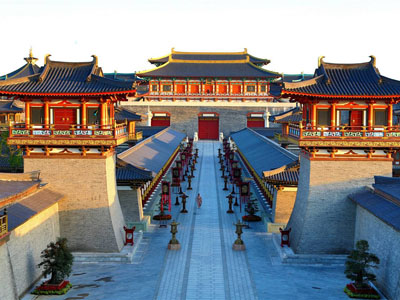
 A. Brief Introduction
A. Brief Introduction The official sector, or imperial palaces are in the eastern part of the Summer Palace. The main structures in this area include the Hall of Benevolence and Longevity (Renshoudian), also known as the Hall of Industrious Government (Qinzhengdian), its side halls and offices of ministers. The private sector is composed of three large courtyards, focusing respectively on the Hall of Jade Ripples (Yulantang), the Hall of Happiness and Longevity (Leshoutang) and the Yiba Hall. The landscape sector, the major part of the park, consists of Longevity Hill, Kunming Lake and a great variety of wooden, stone, glaze and brass structures.
The official sector, or imperial palaces are in the eastern part of the Summer Palace. The main structures in this area include the Hall of Benevolence and Longevity (Renshoudian), also known as the Hall of Industrious Government (Qinzhengdian), its side halls and offices of ministers. The private sector is composed of three large courtyards, focusing respectively on the Hall of Jade Ripples (Yulantang), the Hall of Happiness and Longevity (Leshoutang) and the Yiba Hall. The landscape sector, the major part of the park, consists of Longevity Hill, Kunming Lake and a great variety of wooden, stone, glaze and brass structures.
